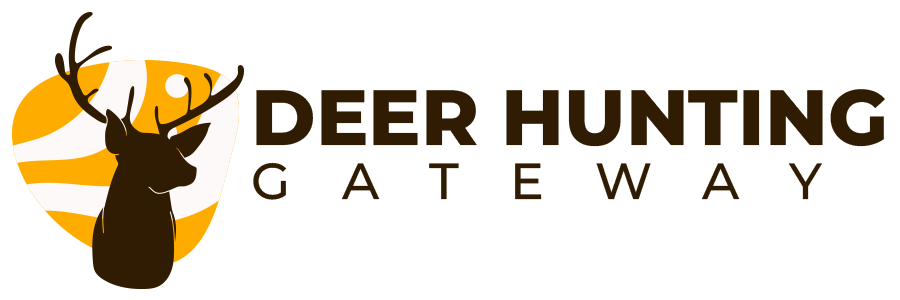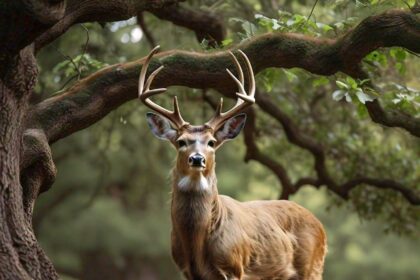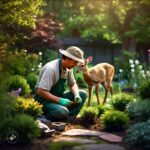
In recent years, the growing presence of deer in urban and suburban areas has become a topic of increasing concern for wildlife managers, ecologists, and even local residents. While urban deer populations may seem like a distant issue for hunters who primarily focus on rural or wilderness areas, the reality is that this phenomenon has significant implications for hunting traditions, wildlife management, and conservation efforts. Hunters, as stewards of the land and key players in wildlife population control, should pay close attention to the rise of urban deer and the challenges it presents.
The Rise of Urban Deer Populations
Deer are highly adaptable creatures, and their ability to thrive in urban environments is a testament to their resilience. As cities and suburbs expand into previously rural areas, deer have found new habitats that provide ample food, shelter, and protection from predators. Landscaped gardens, ornamental plants, and the absence of natural predators make urban areas an ideal refuge for deer. This has led to a surge in deer populations in places where they were once uncommon.
While this might seem like a positive development for wildlife enthusiasts, the overpopulation of deer in urban areas has created a host of problems. From increased vehicle collisions to the destruction of gardens and ecosystems, urban deer are becoming a nuisance for many communities. However, the implications for hunters are equally significant.
Challenges for Hunters
- Limited Access to Hunting Opportunities
Urban deer populations are often located in areas where hunting is either restricted or entirely prohibited due to safety concerns and local ordinances. This means that hunters have limited opportunities to participate in managing these populations, even though they are often the most qualified to do so. As a result, deer in urban areas continue to grow unchecked, leading to overpopulation and its associated problems. - Public Perception of Hunting
The presence of urban deer has sparked debates about how to manage these populations. While hunting is one of the most effective and sustainable methods of controlling deer numbers, it is often met with resistance in urban areas. Many residents who are unfamiliar with hunting view it as inhumane or unnecessary, preferring alternative methods such as sterilization or relocation. However, these methods are often costly, less effective, and impractical for large-scale population control. This disconnect between hunters and urban residents can further erode public support for hunting as a legitimate wildlife management tool. - Ecological Imbalance
Overpopulated deer herds can have devastating effects on local ecosystems. In urban areas, deer often overgraze on native plants, leading to a loss of biodiversity and the degradation of habitats for other wildlife species. This ecological imbalance can extend beyond urban boundaries, affecting rural areas where hunters traditionally operate. For example, if urban deer populations are left unmanaged, they may eventually migrate to nearby rural areas, putting additional pressure on already strained ecosystems. - Disease Transmission
High deer densities in urban areas increase the risk of disease transmission, such as chronic wasting disease (CWD) and Lyme disease. These diseases threaten deer populations and pose risks to humans and other animals. Hunters, often on the front lines of monitoring and managing wildlife health, may deal with the consequences of unchecked urban deer populations.
Opportunities for Collaboration

Despite these challenges, the rise of deer also presents an opportunity for hunters to engage with their communities and advocate for responsible wildlife management. By working with local governments, wildlife agencies, and urban residents, hunters can help bridge the gap between rural traditions and urban realities.
- Education and Outreach
Hunters can play a crucial role in educating the public about the importance of hunting as a tool for wildlife management. By sharing their knowledge and experiences, hunters can help dispel misconceptions and build support for sustainable hunting practices in urban areas. - Advocating for Controlled Hunts
In some urban areas, controlled hunts or culls have been implemented as a way to manage deer populations. Hunters can advocate for these programs, emphasizing their effectiveness and safety when conducted by trained professionals. By participating in or supporting controlled hunts, hunters can demonstrate their commitment to responsible wildlife management. - Promoting Conservation Efforts
Hunters have long been champions of conservation, funding many wildlife management programs through licenses and fees. By highlighting the role of hunting in conservation, hunters can strengthen their position as key stakeholders in addressing urban deer issues.
Conclusion
The rise of urban deer populations is a complex issue that requires careful consideration and collaboration. For hunters, it represents both a challenge and an opportunity to reaffirm their role as stewards of the land. By engaging with urban communities, advocating for responsible management practices, and promoting the benefits of hunting, hunters can help address the problems associated with urban deer while ensuring the sustainability of their traditions. The future of hunting depends on our ability to adapt to changing landscapes, both literally and figuratively, and urban deer are a reminder of the importance of this ongoing effort.
As hunters, we must recognize that the boundaries between urban and rural are becoming increasingly blurred. By taking an active role in addressing deer populations, we can protect our hunting heritage, support conservation efforts, and foster a greater understanding of the vital role hunters play in maintaining healthy ecosystems







